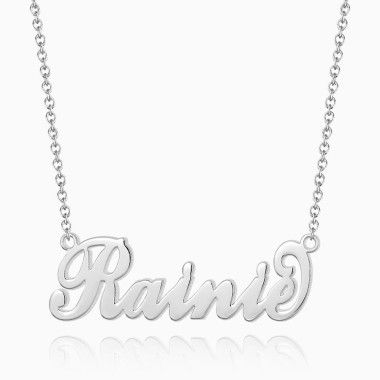The Ultimate Guide to Shipping Container Investment and Utilization
183
0
·
2025/02/19
·
6 mins read
☕
WriterShelf™ is a unique multiple pen name blogging and forum platform. Protect relationships and your privacy. Take your writing in new directions. ** Join WriterShelf**
WriterShelf™ is an open writing platform. The views, information and opinions in this article are those of the author.
Article info
Tags:
Total: 1472 words
Like
or Dislike
More from this author
More to explore









A shipping container is one of the amazing assets whose unique invention transformed global trading and whose unique applications are not limited to the shipping industry are finding their new uses in completely different sectors. These multi-functional structures provide infinite possibilities from storage solutions, pop-up shops, to cash flow investments. If you are an experience investor, or just someone interested in using a container on your property, this guide will cover about all the information you need to know about investing in and using shipping containers.
1. Introduction to Shipping Containers
1.1. What Are Shipping Containers?
Shipping containers are large metal boxes primarily used to transport goods over long distances. Crafted mainly from steel and designed to withstand heavy abuse, shipping containers are integral to the logistics industry. With standard sizes of 20 or 40 feet, these containers are stackable and compatible with ships, trains, and trucks—making them essential for intermodal transport.
1.2. Evolution of Shipping Containers
Before containers, goods were shipped in crates, sacks, and barrels, leading to inefficiency and breakage. The invention of the containerized system by Malcolm McLean in the 1950s transformed the shipping process, optimizing space and reducing transportation costs. Over decades, advancements such as refrigerated containers (reefers) and high cube containers have further expanded their functionality beyond trade.
1.3. The Appeal of Shipping Containers
What makes shipping containers attractive is their durability and versatility. While they were originally designed for transporting goods, businesses and individuals worldwide have repurposed them for construction projects, storage, and even artistic ventures. Today, sustainable and innovative uses for these containers continue to grow, making them a valuable resource across sectors.
2. Understanding the Basics of Shipping Containers
2.1. Anatomy of a Shipping Container
Shipping containers are more than just metal boxes. Each container comes equipped with features such as corner castings for lifting, watertight sealing to protect against weather, and sturdy floors capable of supporting thousands of kilograms. With standard sizes adhering to ISO regulations, shipping containers are built for both durability and practicality.
2.2. Types of Shipping Containers and Their Specific Uses
Not all shipping containers are created equal. Here’s a quick rundown of the most common types and their unique purposes:
Understanding which type suits your needs can save time and money.
2.3. Shipping Container Regulations You Should Know
Every shipping container must comply with the Convention for Safe Containers (CSC), ensuring safety and structural reliability. Vendors need to provide proper certifications, and modifications to containers often require permits for compliance with local building codes when used for construction.
3. Why Invest in Shipping Containers?
3.1. The Growing Demand for Containers
Global trade is growing, and containers are at its heart. Events like the COVID-19 pandemic highlighted the importance of sufficient container supply. The surging e-commerce sector, coupled with increased consumer demand for imports, means that container availability is crucial, driving investor interest in this market.
3.2. Financial Benefits of Shipping Container Investments
Shipping container investments can generate passive income, particularly when you lease containers to shipping companies. These investments also tend to have a quick breakeven point due to low ownership costs and high rental demand.
3.3. Sustainable Investment Option
With circular economies gaining traction, repurposing containers for alternative uses aligns with sustainability goals. These structures offer durability that extends their lifespan far beyond traditional construction materials, making them eco-friendly investment opportunities.
4. Investment Opportunities in Shipping Containers
4.1. Direct Ownership vs. Container Funds
If you’re considering investing in shipping containers, there are two main routes—direct ownership and container funds. Direct ownership provides more control but requires active management, while container funds allow hassle-free investment opportunities, often managed by professionals.
4.2. Leasing as an Investment Option
Container leasing is becoming increasingly popular. Leasing companies rent containers to logistics firms and shipping lines, allowing investors to earn consistent income. This arrangement offers flexibility, especially if you have limited time or resources for direct management.
4.3. Buying & Selling Containers in Trading Marketplaces
Online marketplaces like Shipfinex, xchange have simplified container trading, making the process transparent and accessible. Scouring reputable platforms and confirming certifications can help you avoid scams, ensuring safe and profitable transactions.
4.4. Emerging Investment Trends in the Shipping Container Market
The shipping industry is undergoing rapid transformation, with digital tracking tools and eco-conscious practices making containers smarter and more sustainable. Staying updated on these trends can position you for lucrative opportunities.
5. Container Utilization Beyond Shipping
5.1. Repurposing Containers for Creative Uses
Shipping containers have become architectural favorites for their adaptability and cost-effectiveness. They are now repurposed into offices, cafes, mobile clinics, and even educational centers. Some homeowners are pursuing container-based tiny houses as an affordable housing solution.
5.2. Customization Options
Containers can be tailored to meet specific needs. Common customizations include interior insulation, solar panels, and AC installation for climate control. While customization can increase upfront costs, it offers endless creative possibilities.
5.3. Case Studies of Successful Repurposing Projects
For example, Starbucks has created eco-friendly cafés using modified containers, while emergency housing during disasters has relied on cost-efficient prefab container models. These cases demonstrate how you can think outside the box—literally—when it comes to container utilization.
6. Buying vs. Renting vs. Leasing
6.1. Understanding the Economics of Each Option
Purchasing a container is ideal if you have long-term plans and wish to avoid recurring costs. Renting might work better for short-term projects, while leasing is an affordable option if you anticipate consistent use but can’t cover upfront buying costs.
6.2. Who Should Buy, Rent, or Lease Containers?
Renting makes sense for businesses with limited budgets or seasonal storage needs. On the other hand, buying suits those looking to invest in container resale or customization. Leasing blends the benefits but fits those prioritizing operational flexibility.
6.3. Key Questions to Ask Before Making a Decision
Consider these critical points before committing:
7. Practical Tips for First-Time Investors and Buyers
7.1. How to Choose the Right Shipping Container
Inspect any container you’re considering purchasing, looking out for structural damages like rust, holes, or warped panels. Containers come graded (A, B, or C), indicating their condition and usability.
7.2. Finding Trusted Suppliers and Vendors
Seek suppliers with good track records and genuine certifications. Avoid too-good-to-be-true pricing since it often signals fraud or poor-quality containers.
7.3. Negotiating Prices and Terms
Look for discounts on bulk purchases or opportunities to lease-to-own. Familiarizing yourself with average market prices can strengthen your negotiating power.
7.4. Maintaining and Managing Your Containers
Simple tips like repainting to prevent rust, cleaning regularly, and properly storing containers can significantly extend their lifespan.
8. Risks and Challenges in Shipping Container Investments
8.1. Depreciation and Resale Challenges
Containers lose value after years of heavy use, particularly for models subjected to harsh weather. Always plan for depreciation and consider long-term strategies like repurposing rather than resale.
8.2. Legal and Tax Implications
Consult a financial advisor to ensure compliance with local tax regulations and understand how container ownership might affect your portfolio’s tax structure.
8.3. Supply Chain Volatility Concerns
Disruptions like port strikes or geopolitical issues can reduce demand for containers temporarily. Diversify your assets to mitigate these risks.
9. Frequently Asked Questions (FAQs)
9.1. Common Misconceptions About Container Investment
Investing in shipping containers isn’t just for large corporations. Even small-scale investors can benefit from leasing or repurposing containers locally.
9.2. How Much Do Containers Cost on Average?
Prices typically range from $2,000 to $5,000 for standard containers, though costs may vary depending on type, grade, and condition.
9.3. Can Containers Be Used in Any Climate?
Yes! With proper insulation and modifications, containers can adapt to various climates.
9.4. Is Shipping Container Investment Suitable for Beginners?
Absolutely—it’s one of the easier asset classes to learn, provided you do your research on vendors and markets.
10. Future of Shipping Containers
10.1. The Role of Innovation in Container Design
Smart containers equipped with GPS and tracking sensors can offer enhanced security and operational insights, signaling the next frontier in shipping logistics.
10.2. Growth Opportunities in Developing Markets
Emerging economies are seeing dynamic growth in import-export activity, making them potential hotspots for container investment and leasing opportunities.
10.3. Supporting the Transition to Green Shipping Technologies
As the industry moves toward decarbonization with the help of green initiatives, investing in eco-friendly modifications can add long-term value.
11. Final Thoughts on Shipping Containers
Shipping containers are more than tools of global trade; they are versatile assets that can yield both financial and functional benefits. Whether you’re exploring container-based business ideas or entering container investment, they offer flexible and lucrative opportunities worth considering.